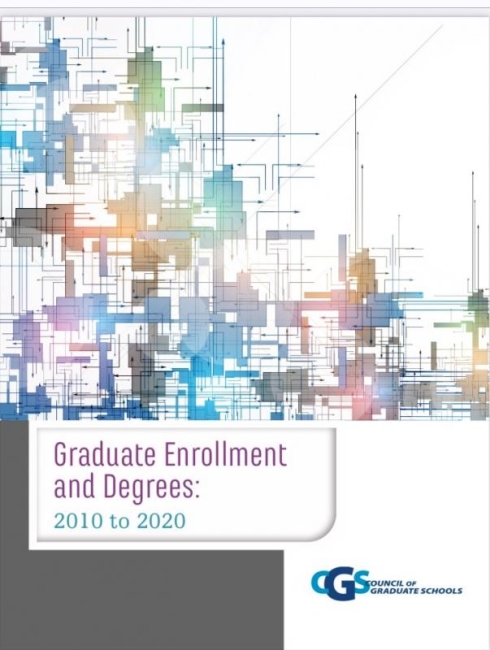You have /5 articles left.
Sign up for a free account or log in.

U.S. graduate schools saw increases in enrollment in fall 2020 despite a big drop in international students, although there were significant differences across fields of study, according to the latest annual survey of graduate enrollment and degrees from the Council of Graduate Schools.
The CGS survey found that graduate applications increased by 7.3 percent and first-time graduate enrollment increased by 1.8 percent in fall 2020 compared to the year before.
Gains in domestic student enrollment -- including enrollment increases among students from underrepresented minority groups -- drove the overall increase.
First-time enrollment of international graduate students decreased by 37.4 percent, a drop largely attributable to the COVID-19 pandemic’s disruptive impact on international travel, while domestic graduate student enrollment grew by 12.9 percent.
The number of new students enrolling full-time in graduate programs decreased by 3.7 percent, while the number of new students enrolling in part-time study grew by 13.5 percent between fall 2019 and fall 2020.
"One of the positive aspects of the pandemic and our age of uncertainty is that graduate programs have gotten much better at flexibility and capacity to accommodate working adults on a part-time basis and online," said Suzanne Ortega, CGS’s president. "That had been starting to happen over time, but I think it has really accelerated over the past year."
Ortega said about 43.4 percent of graduate students are enrolled part-time, and those students are more likely to be women and students from traditionally underrepresented groups.
According to the survey, first-time graduate enrollment increased by 20.4 percent among Latinx students, 16.7 percent among Asian students, 16 percent among Black/African American students, 8.8 percent for American Indian/Alaska Native students and 1.7 percent for Native Hawaiians/other Pacific Islanders.
“Although the baseline enrollment number is small, the increased first-time enrollment of underrepresented minority students is encouraging,” the CGS report states. “From 2010 to 2020, the average annual growth rate for first-time graduate enrollment increased by 9.2 percent among Latinx, 5.4 percent among Black/African Americans, 6.3 percent among Asians/Pacific Islanders, and 0.8 percent among American Indian/Alaska Natives.”
"I’m really heartened by the real increase in the number of African American, Latinx and American Indian students who are enrolled in graduate education, and I think we just have to celebrate progress," Ortega added. "I do also want to remind readers that in some fields we’ve still got a long way to go before we reach anything that looks close to proportional representation." She mentioned physical and earth sciences and engineering as examples of those fields.
There were big differences in first-time enrollment trends across fields of study. Mathematics/computer sciences, engineering and physical and earth sciences -- all fields that enroll large numbers of international students -- experienced overall declines in first-time graduate enrollment of 16.6 percent, 15.8 percent and 7.7 percent, respectively.
On the other hand, first-time graduate enrollment increased by 16 percent in business, 9.1 percent in biological and agricultural sciences, 8 percent in health sciences, and 7.7 percent in education.
Rounding out other major fields, first-time enrollment decreased by 5.6 percent in graduate arts and humanities programs, while rising by 6.5 percent in public administration and services programs and 3.1 percent in social and behavioral sciences programs.
First-time doctoral enrollment decreased by 3.8 percent between fall 2019 and fall 2020, while first-time enrollment in master’s programs increased by 2.8 percent.
The number of doctoral degrees awarded in the 2019-20 academic year decreased by 0.7 percent compared to the previous academic year, while the number of master’s degrees awarded increased by 0.2 percent. The number of graduate certificates awarded increased by 20.7 percent, reflecting continued growth in this area. Between fall 2010 and fall 2020, the number of graduate-level certificates awarded increased by 9.5 percent.
Total (not just first-time) graduate enrollment increased by 2.5 percent across all U.S. graduate programs from fall 2019 to fall 2020, even as total enrollment of international graduate students decreased by 9.7 percent. The total number of domestic students grew by 6.1 percent.
The graduate student enrollment survey was sent to 763 universities; 558 institutions responded, reflecting an overall response rate of 73.1 percent.








